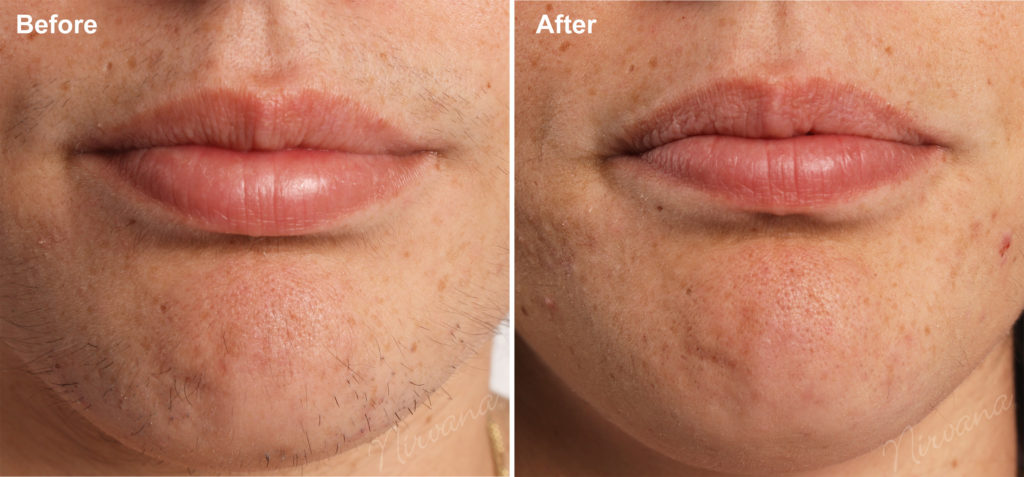Everything you need to Know About Diode-Laser Hair Removal Treatment
Overview
Laser hair removal is a medical procedure that uses a laser – an intense, pulsating beam of light – to remove unwanted hair.

During laser hair removal, a laser beam passes through the skin to an individual hair follicle. The intense heat of the laser damages the hair follicle, which inhibits future hair growth. Laser hair removal is most effective for people who have light skin and dark hair.
Although laser hair removal effectively slows hair growth, it doesn’t guarantee permanent hair removal. It typically takes multiple laser hair removal treatments to provide an extended hair-free period. Periodic maintenance treatments might be needed as well.
Why it’s done
Laser hair removal is used to reduce unwanted hair. Common treatment locations include legs, underarms, upper lip, chin and bikini line. However, it’s possible to treat unwanted hair in nearly any area – except the eyelid or surrounding area.
Hair color and skin type influence the success of laser hair removal. For example, laser hair removal is most effective for people who have light skin and dark hair because the laser beam targets the pigment in the hair. However, advances in technology have made laser hair removal an option for people who have darker skin.
Laser hair removal isn’t generally effective for white, gray, red or blond hair because the laser can’t see the lighter hair. However, treatment options for lighter hair continue to be investigated.
Risks
Laser hair removal doesn’t guarantee permanent hair removal. Some hair could be resistant to the laser treatment or grow again after treatment – although the new hair growth might be finer and lighter in color.
The most common side effects of laser hair removal include:
- Skin irritation. Temporary discomfort, redness and swelling are possible after laser hair removal. Any signs and symptoms typically disappear within several hours.
- Pigment changes. Laser hair removal might darken or lighten the affected skin, usually temporarily. Skin lightening primarily affects those who have darker skin, especially if an incorrect laser is used at an incorrect setting.

Rarely, laser hair removal can cause blistering, crusting, scarring or other changes in skin texture. Other uncommon problems that can occur include graying of treated hair, or paradoxically, hair might begin to grow excessively in or around treated areas.
Laser hair removal isn’t recommended for the eyelid or surrounding area, due to the possibility of severe eye injury.
How you Prepare
If you’re interested in laser hair removal, choose a doctor who’s board certified in a specialty such as dermatology or cosmetic surgery and has experience with laser hair removal. If a physician’s assistant or licensed nurse will do the procedure, make sure a doctor supervises and is available on-site during the treatments. Be cautious about spas, salons or other facilities that allow nonmedical personnel to do laser hair removal.
Before laser hair removal, schedule a consultation with the doctor. The doctor may use this visit to:
- Review your medical history, including medication use
- Discuss risks, benefits and expectations, including what laser hair removal can and can’t do for you.
- Take photos to be used for before and after assessments and long-term reviews
At the consultation, discuss a treatment plan and related costs. Laser hair removal is usually an out-of-pocket expense.
The doctor will also offer specific tips to prepare for laser hair removal. For example:
- Stay out of the sun. A tan increases the risk of side effects, such as skin lightening. If you have a tan – either from sun exposure or sunless tanning products – wait until the tan fades completely before undergoing laser hair removal. Some doctors recommend staying out of the sun for up to six weeks before laser hair removal.
- Avoid plucking, waxing and electrolysis. These hair removal methods can disturb the hair follicle and interfere with laser hair removal.

What you Can Expect
Before laser hair removal, the hair in the treatment area might be trimmed with a pair of scissors. You’ll also be given special goggles to protect your eyes from the laser beam. The doctor might apply a topical anesthetic to your skin to reduce any discomfort during treatment.
During the Procedure
The doctor will press a hand-held laser instrument to your skin. Depending on the type of laser, a cooling device on the tip of the instrument or a cool gel might be used to protect your skin.
When the doctor activates the laser, the laser beam will pass through your skin to the tiny sacs where hair growth originates. The intense heat from the laser beam damages the hair follicles, which inhibits hair growth. Some discomfort in the skin is possible, and you’ll likely feel a sensation of cold from the cooling device or gel..
Treating a small area, such as the upper lip, might take only a few minutes. Treating a larger area, such as the back, might take several hours.
After the Procedure
You might notice redness and swelling for the first few hours after laser hair removal.
To reduce any discomfort, apply ice to the treated area. If you have a skin reaction immediately after laser hair removal, the doctor might apply a steroid cream to the affected area.
After laser hair removal, avoid sun exposure – both natural sunlight and tanning beds. When your skin has healed, use sunscreen whenever you’re in the sun.

Results
Results of laser hair removal vary greatly from person to person, and might depend on what area of the body or face is treated.
Multiple treatments can prolong the duration of hair loss – up to years in some cases – but hair regrowth is still possible. For best results, you might need four to six treatments spaced around six week apart.


